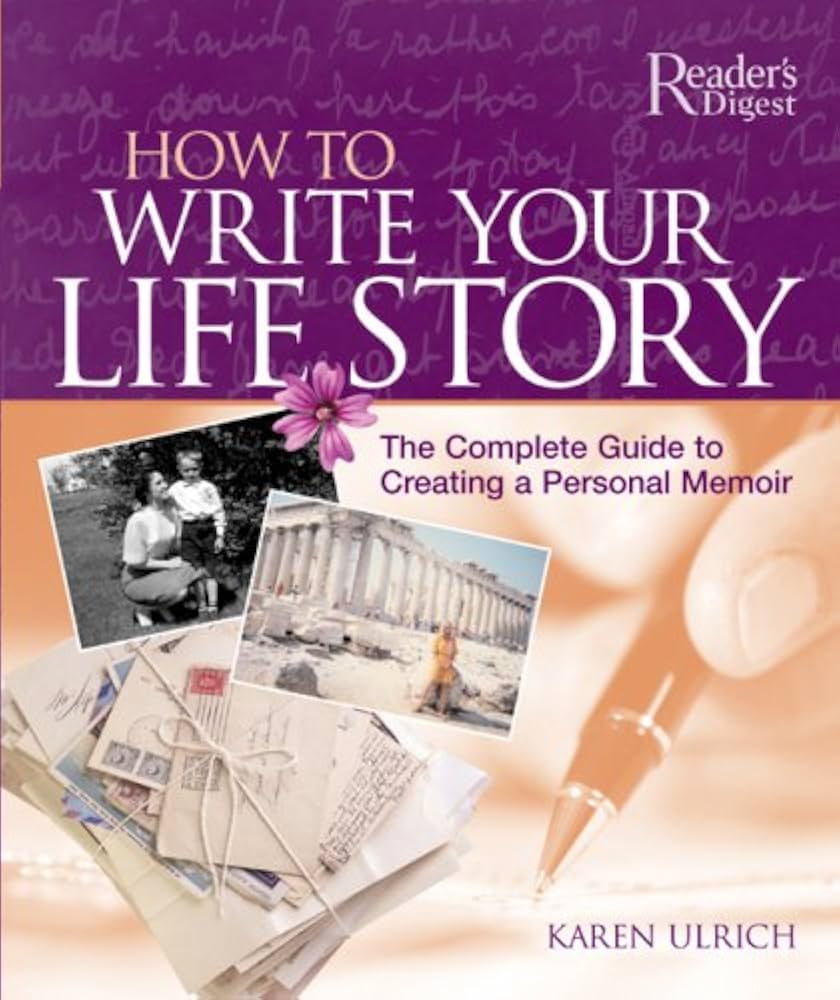
Key Takeaways
- Define your purpose and target audience before you begin.
- Choose a clear focus, theme, and structure for coherence.
- Write with authenticity, vivid detail, and personal insight.
- Maintain a consistent writing routine to stay motivated.
- Edit thoroughly, explore publishing routes, and market your story.
Table of Contents
Introduction
- Section 1: Why Write a Book About Your Life
- Section 2: Define Your Purpose and Audience
- Section 3: Choose Focus and Scope
- Section 4: Organize Your Story Structure
- Section 5: Writing Tips for a Life Story
- Section 6: Set a Writing Routine
- Section 7: Edit and Refine Your Manuscript
- Section 8: Publishing Options
- Section 9: Marketing Your Book
- Conclusion
- FAQ
Introduction
Have you ever thought about the incredible journey your life has been and considered sharing it with the world? If so, this guide on how to write a book about your life is for you. Within these pages, you will learn how to write a book about your life, transforming your experiences into a clear, inspiring story.
Sharing your personal story can leave a deep emotional impact. It can inspire others, teach valuable lessons, and create a bond across generations. In this post, you will find step-by-step guidance on planning, structuring, writing, editing, and publishing your life story.
Here is what to expect:
- Why you should write your life story
- How to define purpose and audience
- Ways to choose focus and scope
- Tips for organizing structure
- Writing advice for authenticity
- Methods to stay motivated
- Editing and refining steps
- Publishing options
- Marketing strategies
- Final encouragement and next steps
Section 1: Why Write a Book About Your Life
Many people wonder why they should share their own stories. Here are key reasons to consider writing your life book:
- Legacy Preservation
- Keeps your memories safe for future generations
- Leaves a lasting imprint beyond your lifetime
- Self-Reflection and Personal Growth
- Promotes introspection and insight
- Offers therapeutic benefits and emotional release
- Inspiring and Helping Others
- Shows readers how you overcame challenges
- Motivates people facing similar struggles
- The Art of Storytelling
- Provides joy and fulfillment in creating a narrative
- Helps sharpen creative and writing skills
Benefits for Writer and Readers
- For the Writer
- Personal fulfillment and clarity of life events
- Emotional release and a sense of achievement
- For the Readers
- Insights into life lessons and experiences
- Feeling connected to someone else’s journey
Examples of Successful Memoirs
- “Educated” by Tara Westover
- A story of growing up isolated and pursuing education
- Resonated with readers who value learning and resilience
- “Becoming” by Michelle Obama
- Shares her childhood, marriage, and life in the White House
- Inspired millions by showing leadership and authenticity
Section 2: Define Your Purpose and Audience
Clarify Your Purpose
- Identify the Type of Life Story
- Memoir: Focus on a theme or period (e.g., overcoming hardship)
- Autobiography: Chronological account of your entire life
- Inspirational Guide: Mix life events with advice
- Set Clear Goals
- Personal healing, sharing lessons, or creating history
- Decide what you want readers to take away
- Determine Your Audience
- Personal vs. Public: For family or close group vs niche or general audience
- Understand Audience Expectations
- Tailor language, depth, and topics to who will read it
- Tone and Content
- Tone: Choose conversational, formal, inspirational, or humorous
- Content: Include stories that matter most to your readers
Section 3: Choose the Focus and Scope of Your Story
Decide on the Scope
- Full Life Story
- Pros: Complete view, sense of growth over time
- Cons: Can be too long or broad
- Specific Period or Theme
- Pros: Sharp focus, deeper exploration
- Cons: May omit other important events
Identify Key Life Events
- Turning Points: Moments that changed your path (e.g., a big move, new job)
- Achievements and Challenges: Times you succeeded or overcame obstacles
- Relationships and Influences: People who shaped who you are today
Avoid Overloading with Details
- Selectivity: Only include events that push your story forward
- Maintain Coherence: Make sure each part ties to your main theme
Techniques for Narrowing Focus
- Mind Mapping: Draw a map of events and themes to see connections
- Journaling: Write short memories and notice which stand out most
Section 4: Organize Your Story Structure
Choose a Narrative Structure
- Chronological Order
- Linear path from past to present
- Best for full autobiographies
- Thematic Structure
- Group chapters by central themes (e.g., family, career)
- Great for focused memoirs
- Non-linear Approach
- Use flashbacks and flash-forwards
- Builds suspense and keeps readers curious
Create an Outline
- Chapter Breakdown: Draft titles and a short summary for each chapter
- Plot Key Events: Ensure each chapter connects logically to the next
- Use Storyboarding Techniques: Visual aids like index cards or software to map scenes
- Rearrange as Needed: Stay flexible to improve flow
Maintain Narrative Momentum
- Cliffhangers: End chapters with unresolved tension
- Foreshadowing: Hint at future revelations to keep readers engaged
Section 5: Writing Tips for a Life Story
Write with Authenticity and Honesty
- Be Truthful: Stick to facts and date accuracy
- Show Vulnerability: Share struggles to build a real connection
Balance Fact with Compelling Storytelling
- Descriptive Language: Paint scenes with vivid detail
- Literary Devices: Use metaphors, similes, and analogies for depth
Utilize Dialogue
- Recreate Conversations: Capture key chats from memory that drove change
- Keep Dialogue Tags Clear: “He said,” “she replied” to avoid confusion
Describe Settings and Scenes
- Sensory Details: Include sights, sounds, smells, feelings, and tastes
- Atmosphere: Set a mood for each scene (e.g., tense, joyful)
Protect Privacy and Handle Sensitive Topics
- Anonymize When Needed: Change names or details to avoid privacy issues
- Consent: Ask permission before sharing someone else’s story
- Legal Considerations: Know basic defamation rules and privacy laws
Section 6: Set a Writing Routine and Stay Motivated
Establish a Regular Writing Schedule
- Set Specific Times: Choose times you feel most alert and creative
- Create a Habit: Write daily or on set days to build momentum
- Set Achievable Goals: Daily or weekly word count or chapter targets
- Milestones: Celebrate finishing chapters or major sections
Create a Productive Writing Environment
- Minimize Distractions: Quiet space, silence notifications
- Comfortable Setup: Good chair, proper lighting, clean desk
Overcome Self-Doubt
- Positive Affirmations: Remind yourself of your purpose and gifts
- Support Systems: Share progress with friends or join a writing group
Use Writing Prompts and Tools
- Prompts: Quick questions to spark ideas on tough days
- Voice Recordings: Talk into your phone when you can’t sit down to write
Section 7: Edit and Refine Your Manuscript
Initial Self-Editing
- First Read-Through: Read straight through to see the big picture
- Notes and Annotations: Highlight areas needing work or more detail
Implement Editing Techniques
- Grammar and Spell Checks: Use tools like Grammarly or Hemingway Editor
- Read Aloud: Helps catch odd phrasing and run-on sentences
- Check for Consistency: Ensure names, dates, and facts all match
Seeking Feedback
- Beta Readers: Find friends or peers who give honest, constructive feedback
- Writing Workshops or Groups: Get diverse opinions on your style and content
- Professional Editing: Hire an editor for developmental editing, copyediting, and proofreading
Refining Your Manuscript
- Cut Unnecessary Content: Remove sections that don’t serve the main story
- Enhance Clarity: Simplify complex or confusing passages
- Improve Flow: Add transitions to link chapters and ideas smoothly
Section 8: Publishing Options
Traditional Publishing
- Understanding the Process: Query literary agents with a strong proposal and let agents pitch to publishers
- Pros: Professional editing and marketing support, wider distribution, credibility
- Cons: Very competitive, slow, less creative control
Self-Publishing
- Platforms: Amazon Kindle Direct Publishing (KDP), Smashwords, IngramSpark
- Learn more about self-publishing vs traditional publishing, plot structure, and techniques
- Pros: Full creative control, faster release, higher royalty rates
- Cons: Upfront costs for editing and marketing, you handle promotion
Hybrid Publishing
- Combination Approach: Share costs and tasks with a smaller publisher
- Considerations: Research any hybrid company thoroughly before signing
Prepare Your Manuscript for Publication
- Formatting: Use templates for print and e-book layouts or hire someone
- Cover Design: A professional-looking cover is key—hire a designer or use tools like Canva
- Obtain an ISBN: Buy from official agencies or get one via self-publishing platforms
Section 9: Marketing Your Book
Build an Author Platform
- Website and Blog: Create a simple site to showcase you and your work
- Optimize your online presence with our guide on SEO for authors
Social Media
- Use Facebook, Instagram, or Twitter to connect with readers
- Post regularly about your book journey
Engage with Your Audience
- Email Newsletter: Collect emails and send news or bonus content
- Respond to Comments: Build community by listening and replying
Leverage Reviews and Testimonials
- Request Reviews: Ask early readers to post reviews on Amazon or Goodreads
- Use Testimonials: Feature positive quotes in marketing materials
Promotions and Giveaways
- Offer free chapters or excerpts to entice readers
- Host contests on social media to boost interest
Media and Public Relations
- Press Releases: Send announcements to local news outlets
- Interviews and Podcasts: Pitch yourself as a guest to relevant shows
Paid Advertising
- Amazon Ads: Run targeted ads on the Kindle store
- Social Media Ads: Use Facebook or Instagram ads to reach more readers
Conclusion
Everyone has a unique story worth telling. Now that you know how to write a book about your life, you can begin turning your memories into a powerful narrative.
Your personal tale can touch hearts, teach lessons, and help others feel less alone. Writing your life story offers deep fulfillment and a chance to leave your mark.
Recap of Key Steps
- Define your purpose and audience
- Choose focus and structure
- Write with honesty and vivid detail
- Stay motivated with a firm routine
- Edit carefully with help from others
- Pick the best publishing path
- Market your work to reach readers
Call to Action
Share your thoughts or questions in the comments below. If you’re ready to start, grab a notebook, set a goal, and write that first sentence today. And don’t forget to subscribe for more tips on writing and publishing your personal story.
FAQ
Q: How long does it take to write a book about my life?
A: Writing time varies based on focus and schedule. Some authors finish a memoir in 3–6 months with daily writing, while full autobiographies can take 1–2 years.
Q: Do I need prior writing experience?
A: No—anyone with a story can learn the craft. Use writing guides, workshops, and tools to improve your skills over time.
Q: How personal should I be?
A: Balance honesty with privacy. Anonymize sensitive details and obtain consent if others are prominently featured.
Q: What’s the difference between a memoir and an autobiography?
A: A memoir centers on specific themes or periods in your life, while an autobiography covers your entire life chronologically.
Q: Should I self-publish or go traditional?
A: It depends on your goals, budget, and timeline. Self-publishing offers speed and control; traditional publishing provides support and credibility.



